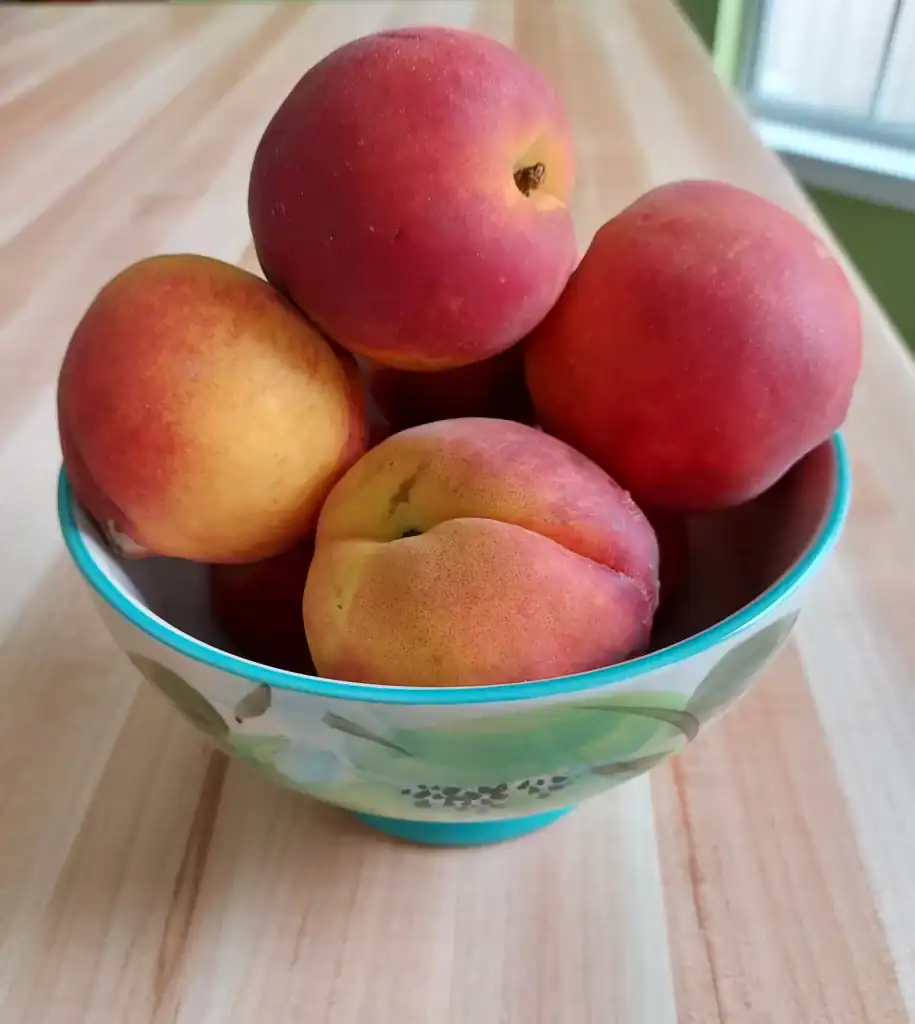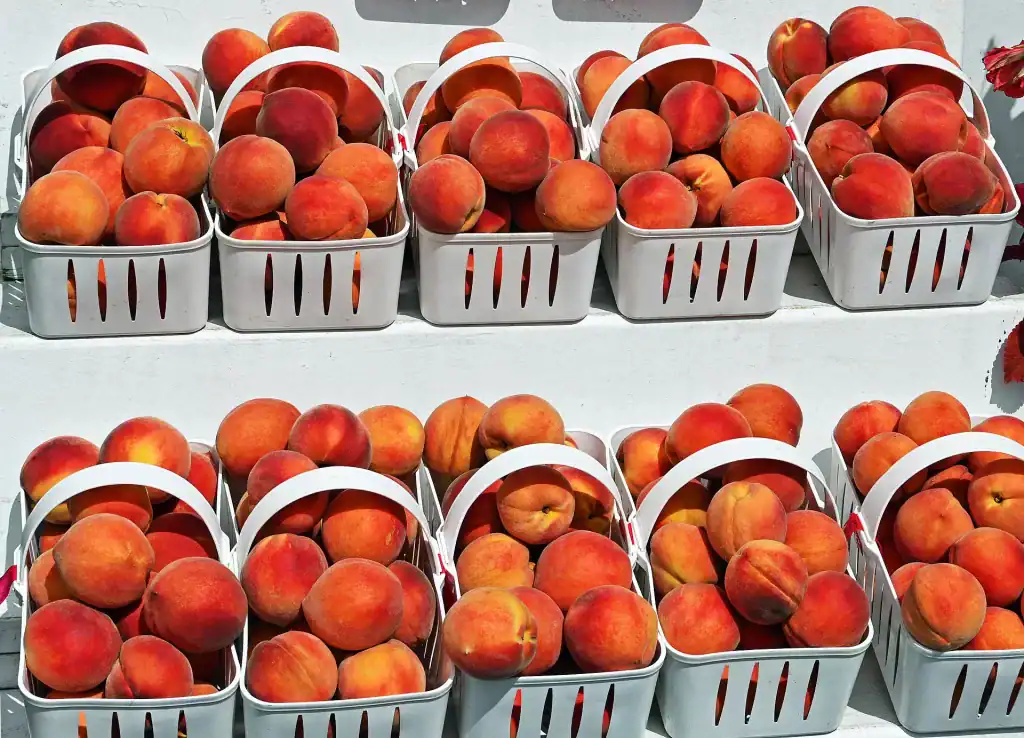Peachy Keen: A History of the Georgia Peach

It is that time of year when our favorite deep-pink and golden fruit is ripening and will make its appearance at our favorite road-side stand. That’s right, it is Georgia peach season.
It is not just us Georgians who are fans of this summer fruit; the Georgia peach has become iconic across American culture. How did it receive this lofty reputation? Learn the details – from its origins in a faraway land to its role as a top producer in the state – below.
World Traveler
Peaches originated not in the Americas but in China over 2,500 years ago. This fruit then traveled West along ancient trade routes to Persia (modern-day Iran), giving it its botanical name of Prunus persica. The Spanish brought peach trees to the New World, with Franciscan monks’ introducing it to Cumberland Island and St. Simons Island in the sixteenth century.

By the 1700s, both Indigenous peoples and settlers throughout the southeastern colonies cultivated peaches. Early European colonists appreciated them for their adaptability, fast growth, and sweet taste. Georgia, with its rich soil and mild climate, provided ideal growing conditions for peach trees, which by the mid-1700s were a common sight throughout this region.
Life’s a Peach in Georgia
It was not until after the Civil War that Georgia began its transformation into “The Peach State.” Prior to the war, cotton reigned supreme in Georgia’s economy, but the war’s destruction and a subsequent boll weevil infestation decimated its production. Peach farming emerged as a promising alternative, since peaches did not deplete the soil as badly as cotton did.
In the 1870s, Samuel Henry Rumph – a pivotal figure in Georgia’s peach history – developed a hardy peach variety known as the Elberta peach. This variety, which he named for his wife, could withstand transportation over long distances. This was a crucial advancement at a time when refrigerated railcars were becoming more widely available. Rumph’s innovation allowed Georgia growers to ship their peaches to markets across the Northeast and Midwest, where they quickly became popular for their superior flavor and texture.
Hitting the Bigtime
By the late nineteenth century, Georgia peaches had achieved national acclaim, earning the state its moniker of the “Peach State.” However, Georgia peaches reached their peak in the 1920s and 1930s, as the state produced tens of millions of bushels of peaches per year. This fruit increasingly became a part of Georgia’s cultural identity, gracing everything from advertisements to postcards and roadside murals. In 1922, Fort Valley held the first Peach Blossom Festival — a weeklong celebration which eventually grew into today’s Georgia Peach Festival, still held each June.
Despite its nickname, Georgia is no longer the nation’s top peach producer. That title belongs to California, followed by South Carolina. In fact, South Carolina produces nearly double the amount of peaches Georgia does.

However, this fruit remains a key part of Georgia’s agricultural economy, as the state harvests about 130 million pounds of peaches annually. Georgia grows more than 40 commercial varieties of peaches, primarily in the central region, where the climate is most favorable.
Georgia peaches are still known for their quality. The state’s red clay soil and variable climate produce peaches with a unique flavor, often described as juicier and more fragrant than their California counterparts. Varieties like Elberta, Red Globe, and Georgia Belle continue to be popular for their taste.
A Cultural Icon
Peaches are embedded in Georgia’s identity in ways that go beyond agriculture. The word “peach” appears in hundreds of Georgia road names, schools, businesses, and even in the names of iconic roads like Atlanta’s Peachtree Street. Culinary traditions around Georgia peaches are also strong, from peach cobbler and peach ice cream to savory peach-glazed pork and peach chutneys. Georgia peaches even have a place in American pop culture; songs like “Peaches” by Justin Bieber and references in movies like Sweet Home Alabama speak to the fruit’s continued allure.
Though no longer the top peach producer, Georgia’s rich legacy with this fruit is unrivaled. Now that it is peak season, grab a peach from your favorite local seller and, in that first succulent bite, taste the history and culture behind Georgia’s official fruit.
Learn more about peaches and their history in Southeast Georgia on our Cumberland Island Walking Tour: Haunting Ruins and Wild Horses or our Fugitives, Fighters, and Fudge: St. Marys Walking Tour!


